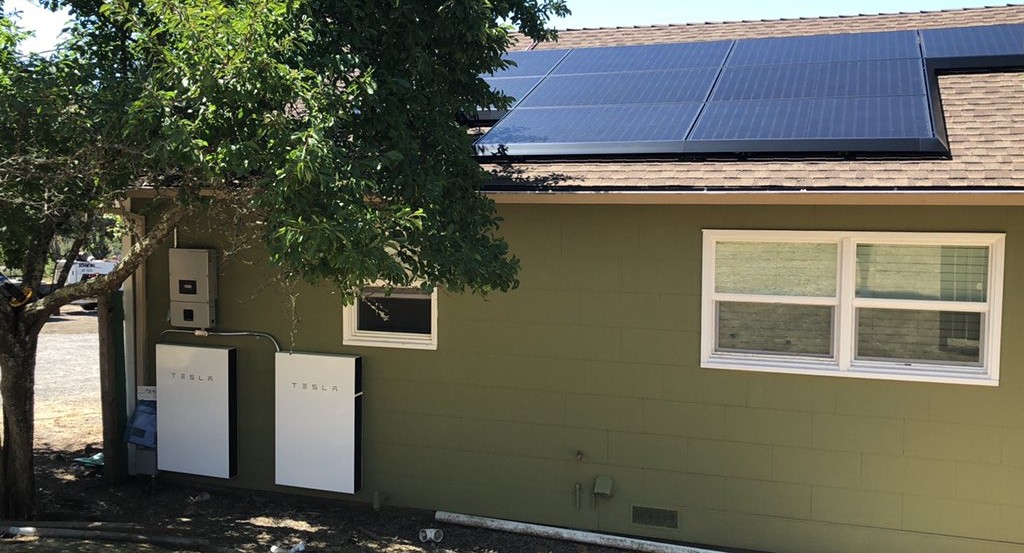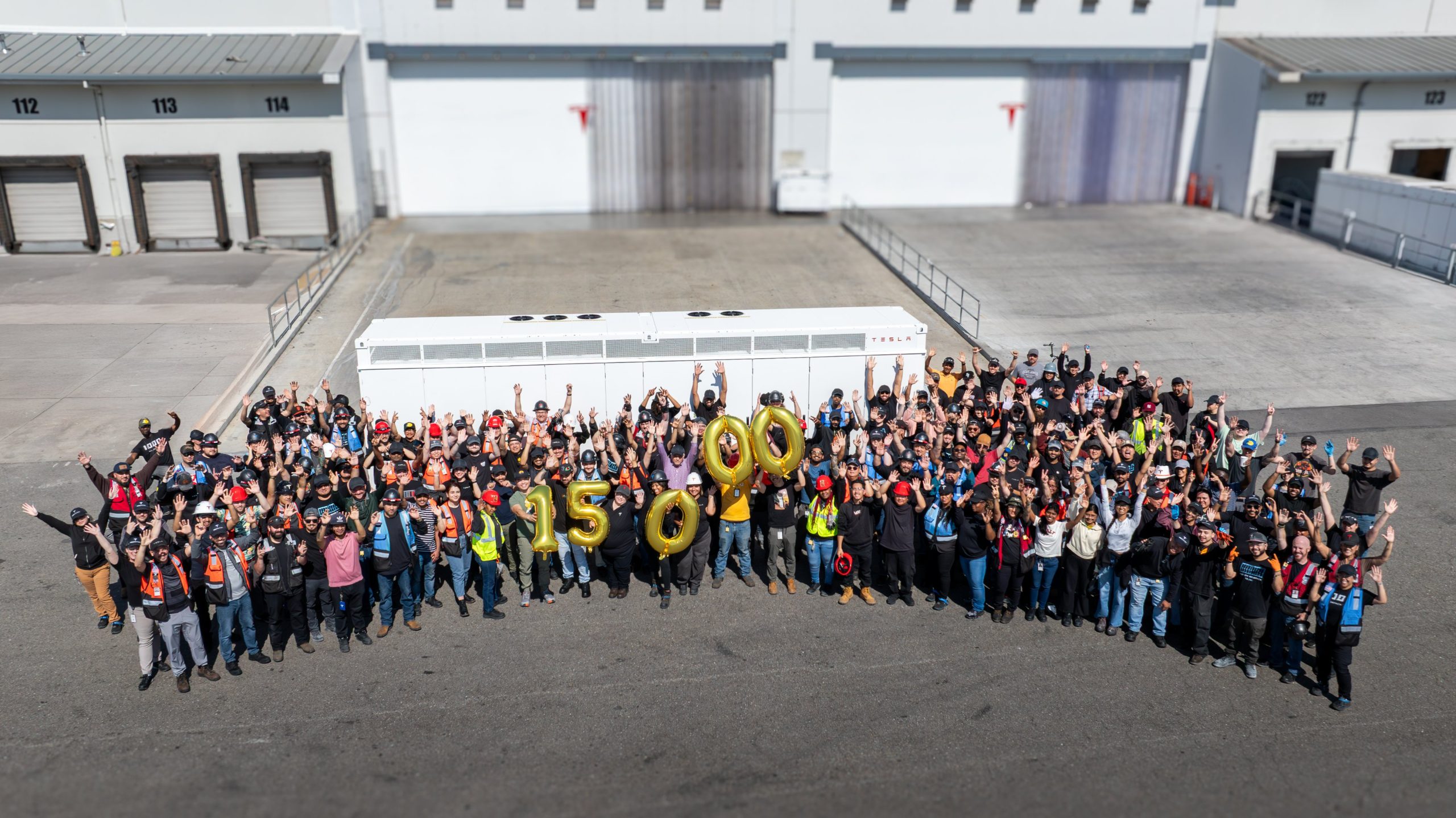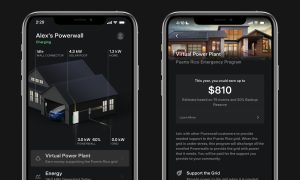

Energy
Tesla Energy’s quick installs hint at ongoing residential solar and Powerwall ramp
It appears that Tesla Energy’s highly-anticipated ramp is picking up some speed. With Model 3 production humming at levels that allow the company to begin distributing the all-electric sedans to international markets, the company seems to be intent in gaining back some momentum in the United States’ residential solar market, a segment that was, at one point, dominated by SolarCity.
Tesla Model 3 owner Nick Wood and his family had been looking to add solar panels and a home battery system to their house in Santa Rosa, CA. The home had been affected by the 2017 wildfires, and PGE had advised residents in the area that there will be power interruptions during windy, dry conditions. With the family being all-in on electric vehicles — a Tesla Model 3 and two Chevy Bolts under a lease — the Woods needed a way to achieve power independence from the grid.
The family filed applications for two projects: one for their main house with about 40 kW of solar panels and five Powerwall units, and another for a second house with 8.2 kW of solar and two Powerwalls. Both applications were filed around June 10. Following a site visit and once the loan terms and other financials of the project were approved, Tesla informed the family that the first Powerwall and solar panels were set to be installed on July 2. That was just over three weeks since the system was ordered.
@Tesla @elonmusk @ElectrekCo @Teslarati @ValueAnalyst1 Tesla solar easy as ordering a car 3 weeks from order to install, less than cost of power per month. Looks like 2 power walls and 26 panels will be installed in 1 day. Longer to get county/PGE sign off
— 🔋Nick Wood 🔋🚀🚀🚀 (@nick_waya) July 2, 2019
The Tesla installers arrived at around 9 a.m. on the day of the installation. The team worked simultaneously, with some working on trenches for the system’s power connections, others setting up the Powerwalls, and the rest installing the solar panels. Much to the Woods’ appreciation, the entire project was fully completed before the end of the day. The team even set up two electric car chargers at no extra cost. The Tesla team also gave the Woods their email addresses so that they could forward any pertinent information about the site to the installers of the main house’s upcoming 40 kW solar panels and five Powerwalls.
In a message to Teslarati, Nick Wood mentioned that the installers had been finishing around one Tesla Energy project per day. The installers also stated that they have been particularly busy as of late, with an appointment with a residential solar and/or Powerwall customer being scheduled daily. Quite notably, Wood stated that his family now has to wait around 1-5 weeks for the county inspection so that they can activate the system. That’s potentially longer than the time it took for the solar panels and Powerwalls to be ordered and installed.
- A Tesla Solar and Powerwall 2 installation at Santa Rosa, CA. (Photo: Nick Wood)
- A Tesla Solar and Powerwall 2 installation at Santa Rosa, CA. (Photo: Nick Wood)
A Tesla Solar and Powerwall 2 installation at Santa Rosa, CA. (Photo: Nick Wood)
Granted, part of the reason behind the quick turnaround time of the Woods’ residential solar installation could be their location. Being in California, the family lives in a state that is heavily saturated by Tesla. Nevertheless, the efficiency exhibited by the installers, as well as the team’s mention of busy weeks filled with project after project, hints at a ramp in the company’s Energy initiatives.
This bodes well for Tesla’s residential solar business, which has seen a decline since the company acquired SolarCity in 2016. Since SolarCity’s peak of commanding 32.6% of the US market in 2014, Tesla’s presence in the country’s residential solar segment as shrunk, hitting only 6.3% during Q1 2019. Nevertheless, hints of a potential ramp started emerging last year, when Tesla started dramatically reducing its customer acquisition costs by spending only $0.40 per watt to acquire customers. This is far lower than competitors such as Vivint, which has customer acquisition costs of $0.94 per watt, and Sunrun, whose costs run at $0.90 per watt.
Tesla Energy is pretty much a sleeping giant for now. The business has so far been away from the spotlight, especially amidst the production ramp of the Model 3, but it has a lot of potential. Legendary investor Ron Baron, for one, has estimated that Tesla Energy on its own could be worth $500 billion. Elon Musk and the company’s executives, for their part, have noted that a ramp in Tesla Energy’s activities is underway, with the CEO stating during the unveiling of the Model Y that 2019 will be the “Year of the Solar Roof and Powerwall.”
Energy
Tesla launches first Virtual Power Plant in UK – get paid to use solar
Tesla has launched its first-ever Virtual Power Plant program in the United Kingdom.

Tesla has launched its first-ever Virtual Power Plant program in the United Kingdom. This feature enables users of solar panels and energy storage systems to sell their excess energy back to the grid.
Tesla is utilizing Octopus Energy, a British renewable energy company that operates in multiple markets, including the UK, France, Germany, Italy, Spain, Australia, Japan, New Zealand, and the United States, as the provider for the VPP launch in the region.
The company states that those who enroll in the program can earn up to £300 per month.
Tesla has operated several VPP programs worldwide, most notably in California, Texas, Connecticut, and the U.S. territory of Puerto Rico. This is not the first time Tesla has operated a VPP outside the United States, as there are programs in Australia, Japan, and New Zealand.
This is its first in the UK:
Our first VPP in the UK
You can get paid to share your energy – store excess energy in your Powerwall & sell it back to the grid
You’re making £££ and the community is powered by clean energy
Win-win pic.twitter.com/evhMtJpgy1
— Tesla UK (@tesla_uk) July 17, 2025
Tesla is not the only company that is working with Octopus Energy in the UK for the VPP, as it joins SolarEdge, GivEnergy, and Enphase as other companies that utilize the Octopus platform for their project operations.
It has been six years since Tesla launched its first VPP, as it started its first in Australia back in 2019. In 2024, Tesla paid out over $10 million to those participating in the program.
Participating in the VPP program that Tesla offers not only provides enrolled individuals with the opportunity to earn money, but it also contributes to grid stabilization by supporting local energy grids.
Energy
Tesla Lathrop Megafactory celebrates massive Megapack battery milestone
The Tesla Megapack is the backbone of Tesla Energy’s battery deployments.

The Tesla Lathrop Megafactory recently achieved a new milestone. As per the official Tesla Megapack account on X, the Lathrop Megafactory has produced its 15,000th Megapack 2 XL battery.
15,000 Megapack Batteries
Tesla celebrated the milestone with a photo of the Lathrop Megafactory team posing with a freshly produced Megapack battery. To commemorate the event, the team held balloons that spelled out “15,000” as they posed for the photo.
The Tesla Megapack is the backbone of Tesla Energy’s battery deployments. Designed for grid-scale applications, each Megapack offers 3.9 MWh of energy and 1.9 MW of power. The battery is extremely scalable, making it perfect for massive energy storage projects.
More Megafactories
The Lathrop Megafactory is Tesla’s first dedicated facility for its flagship battery storage system. It currently stands as the largest utility-scale battery factory in North America. The facility is capable of producing 10,000 Megapack batteries every year, equal to 40 GWh of clean energy storage.
Thanks to the success of the Megapack, Tesla has expanded its energy business by building and launching the Shanghai Megafactory, which is also expected to produce 40 GWh of energy storage per year. The ramp of the Shanghai Megafactory is quite impressive, with Tesla noting in its Q1 2025 Update Letter that the Shanghai Megafactory managed to produce over 100 Megapack batteries in the first quarter alone.
Tesla Energy’s Potential
During the first quarter earnings call, CEO Elon Musk stated that the Megapack is extremely valuable to the energy industry.
“The Megapack enables utility companies to output far more total energy than would otherwise be the case… This is a massive unlock on total energy output of any given grid over the course of a year. And utility companies are beginning to realize this and are buying in our Megapacks at scale,” Musk said.
Energy
Tesla Megapacks powers the xAI Colossus supercomputer
Tesla Megapacks step in to stabilize xAI’s Colossus supercomputer, replacing natural gas turbines. Musk’s ventures keep intertwining.

Tesla Megapack batteries will power the xAI Colossus supercomputer in Memphis to ensure power stability. The collaboration between Tesla and xAI highlights the synergy among Elon Musk’s ventures.
The artificial intelligence startup has integrated Tesla Megapacks to manage outages and demand surges, bolstering the facility’s reliability. The Greater Memphis Chamber announced that Colossus, recently connected to a new 150-megawatt electric substation, is completing its first construction phase. This transition addresses criticism from environmental justice groups over the initial use of natural gas turbines.
“The temporary natural gas turbines that were being used to power the Phase I GPUs prior to grid connection are now being demobilized and will be removed from the site over the next two months.
“About half of the operating turbines will remain operating to power Phase II GPUs of xAI until a second substation (#22) already in construction is completed and connected to the electric grid, which is planned for the Fall of 2025, at which time the remaining turbines will be relegated to a backup power role,” the Chamber stated.
xAI’s rapid development of Colossus reflects its ambition to advance AI capabilities, but the project has faced scrutiny for environmental impacts. The shift to Megapacks and grid power aims to mitigate these concerns while ensuring operational continuity.
The Megapack deployment underscores the collaboration among Musk’s companies, including Tesla, SpaceX, Neuralink, and The Boring Company. Tesla appears to be the common link between all of Musk’s companies. For example, The Boring Company built a tunnel in Giga, Texas. In addition, Musk has hinted at a potential collaboration between the Tesla Optimus Bot and Neuralink. And from January 2024 to February 2025, xAI invested $230 million in Megapacks, per a Tesla filing.
Tesla Energy reported a 156% year-over-year increase in Q1 2025, deploying 10.4 GWh of storage products, including Megapacks and Powerwalls. Tesla’s plans for a new Megapack factory in Waller County, Texas, which is expected to create 1,500 jobs in the area, further signal its commitment to scaling energy solutions.
As xAI leverages Tesla’s Megapacks to power Colossus, the integration showcases Musk’s interconnected business ecosystem. The supercomputer’s enhanced stability positions xAI to drive AI innovation, while Tesla’s energy solutions gain prominence, setting the stage for broader technological and economic impacts.
-

 Elon Musk1 day ago
Elon Musk1 day agoWaymo responds to Tesla’s Robotaxi expansion in Austin with bold statement
-

 News1 day ago
News1 day agoTesla exec hints at useful and potentially killer Model Y L feature
-

 Elon Musk2 days ago
Elon Musk2 days agoElon Musk reveals SpaceX’s target for Starship’s 10th launch
-

 Elon Musk3 days ago
Elon Musk3 days agoTesla ups Robotaxi fare price to another comical figure with service area expansion
-

 News1 day ago
News1 day agoTesla’s longer Model Y did not scale back requests for this vehicle type from fans
-

 News1 day ago
News1 day ago“Worthy of respect:” Six-seat Model Y L acknowledged by Tesla China’s biggest rivals
-

 News2 days ago
News2 days agoFirst glimpse of Tesla Model Y with six seats and extended wheelbase
-

 Elon Musk2 days ago
Elon Musk2 days agoElon Musk confirms Tesla is already rolling out a new feature for in-car Grok










